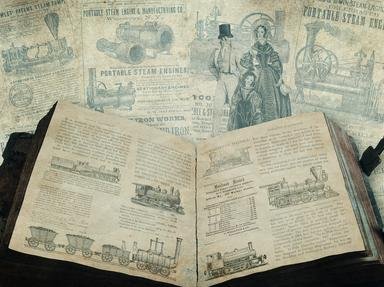Quiz Answer Key and Fun Facts
1. The story of "The Fir Tree" by Hans Christian Andersen is about a little fir tree who is so desperate to grow up and to go on to greater things that it doesn't appreciate what it's got. One day it sees some of the larger trees being taken away. The fir tree is envious when a stork later tells it that they have become what?
2. In the one act Christmas operetta "Amahl and the Night Visitors", what does Amahl say he wants to give the Three Wise Men to bring to the Christ Child?
3. Robert Frost wrote a poem titled "Christmas Trees" about a farmer who had many evergreen trees on his land. What was the main issue in the poem?
4. On which short story was the film "It's a Wonderful Life" based?
5. In O. Henry's "The Gift of the Magi", we read that Della has $1.87 to buy her husband Jim's Christmas present. How did she get the money?
6. Peter Tchaikovsky's famous ballet "The Nutcracker", was based on "The Nutcracker and the Mouse King", a story written by German author E.T.A. Hoffmann. A well-known musician and bandleader captured Tchaikovsky's music from The Nutcracker Suite in jazz in an album of the same name in 1960. Who was/is this American jazz icon?
7. Saint Nicholas was said to leave presents for all the good children, but according to legend, there were several monsters who would punish the bad. Which giant Icelandic troll took naughty children back to her cave where she boiled them to add to her favourite stew?
8. Charles Dickens divided his famous novella "A Christmas Carol" into five distinct sections which he called after which musical term?
9. "The Other Wise Man" by Henry van Dyke tells the story of Artaban, the fourth of the Magi. His treasured gifts were a sapphire, a ruby and a beautiful pearl. Artaban was to meet a caravan and travel across the desert with Gaspar, Balthasar and Melchior. Sadly, Artaban arrived too late for the rendezvous. What was the reason he was delayed?
10. The poinsettia with its bright red flowers is a common sight at Christmas. According to a Mexican legend known as "The Miracle of the First Poinsettia", the flowers first burst forth from a humble offering made at a crib scene. What was this offering which although poor, was made from the heart?
Source: Author
emiloony
This quiz was reviewed by FunTrivia editor
agony before going online.
Any errors found in FunTrivia content are routinely corrected through our feedback system.

